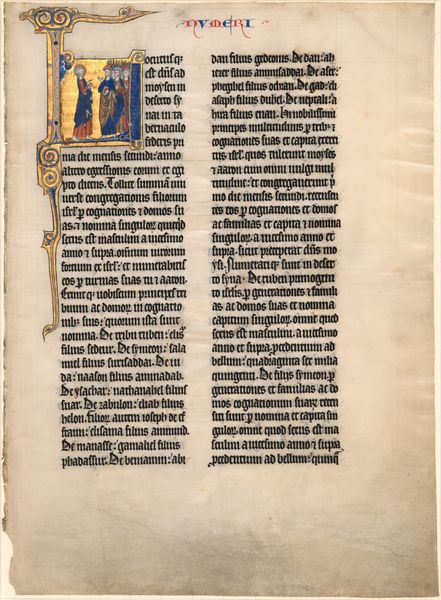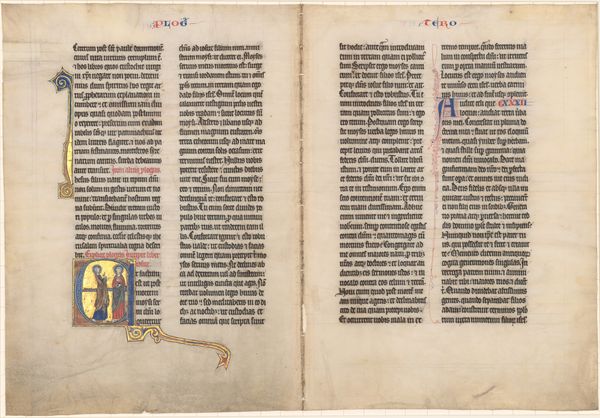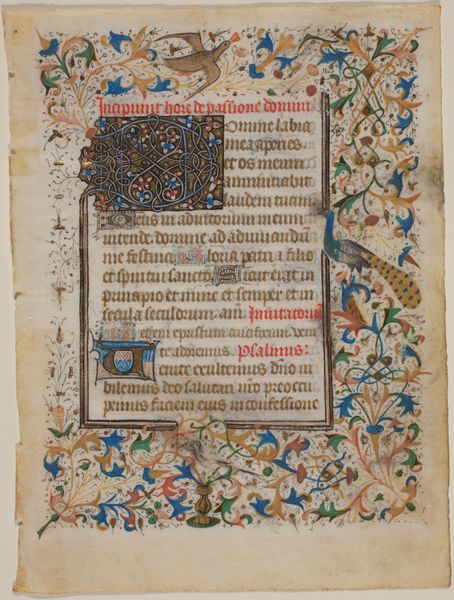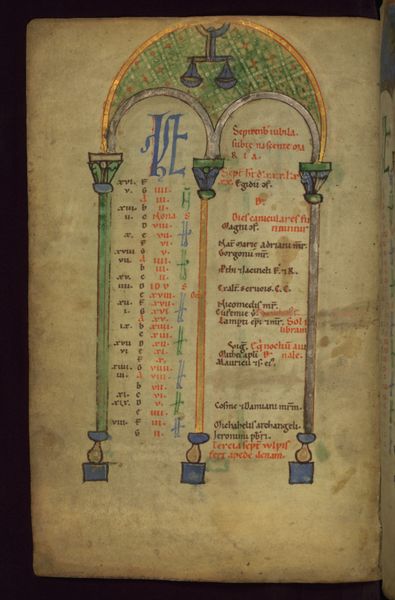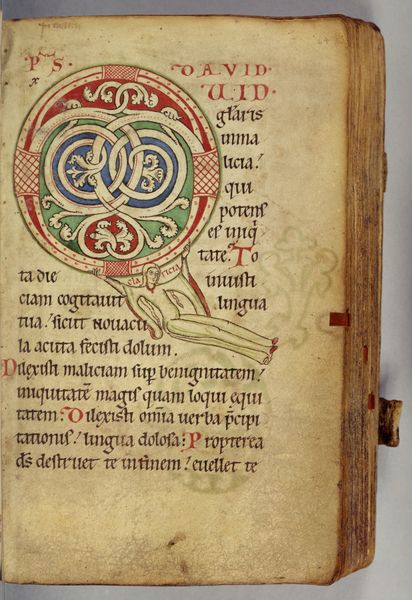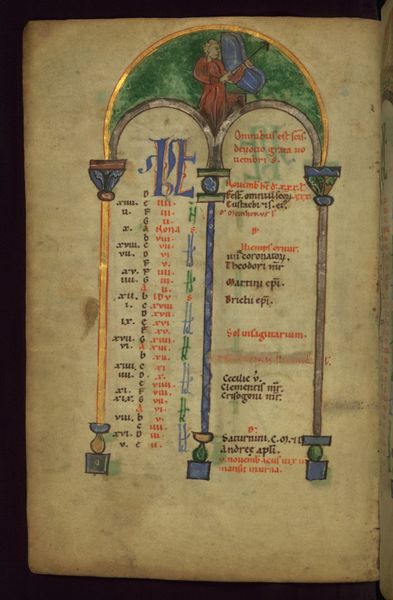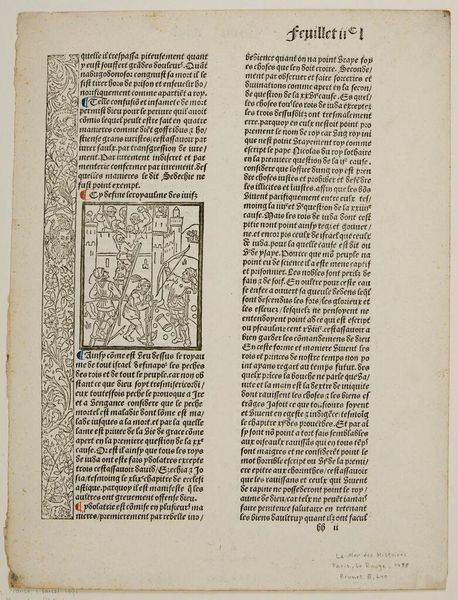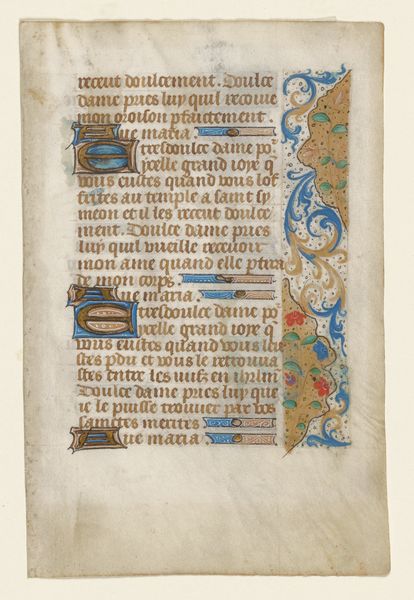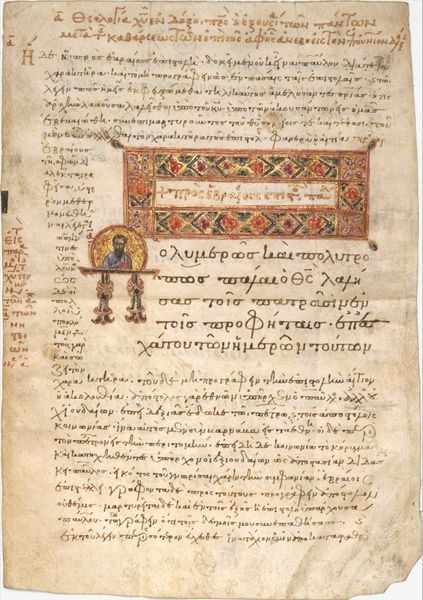
drawing, textile, paper, ink
#
drawing
#
medieval
#
textile
#
paper
#
ink
#
coloured pencil
Copyright: National Gallery of Art: CC0 1.0
Editor: This is "Manuscript Leaf from a Bible (Deuteronomy)," created around 1240 by an anonymous artist. It's made of ink on… some kind of textile, or maybe treated paper? Anyway, I'm struck by how much visual weight the large initial letter carries, and the feeling of reverence that comes with it. What do you see in this piece? Curator: I see echoes of a sacred and symbolic worldview, where the visual representation is not merely decorative, but intrinsically linked to the power of the word. Think about the 'D' that anchors the page; it’s not just an initial, but a gateway. Notice the deep blues and the burnished gold. They signify heavenly realms, divine light. Editor: A gateway... I hadn’t thought of it that way. It definitely does feel separate from the main text. Is that intentional, like separating the mundane from the divine? Curator: Exactly. Consider how the images nestle within that initial – perhaps figures from scripture, or symbolic representations of virtues. Even the script itself, with its precise and deliberate strokes, aims to convey the permanence and authority of the sacred text. Do you think the artist would've considered the visual experience integral to understanding the text? Editor: Absolutely! Seeing it that way makes me realize it wasn't just about reading the words. It was about experiencing them in a deeply symbolic way, visually and spiritually. Curator: Yes! It's cultural memory embedded in line and color, an experience for all who read. Editor: I’ll definitely look at medieval manuscripts differently now, with more of an eye for symbolism. Thanks for sharing your insights. Curator: My pleasure. The symbols speak, if we but listen and look.
Comments
No comments
Be the first to comment and join the conversation on the ultimate creative platform.
